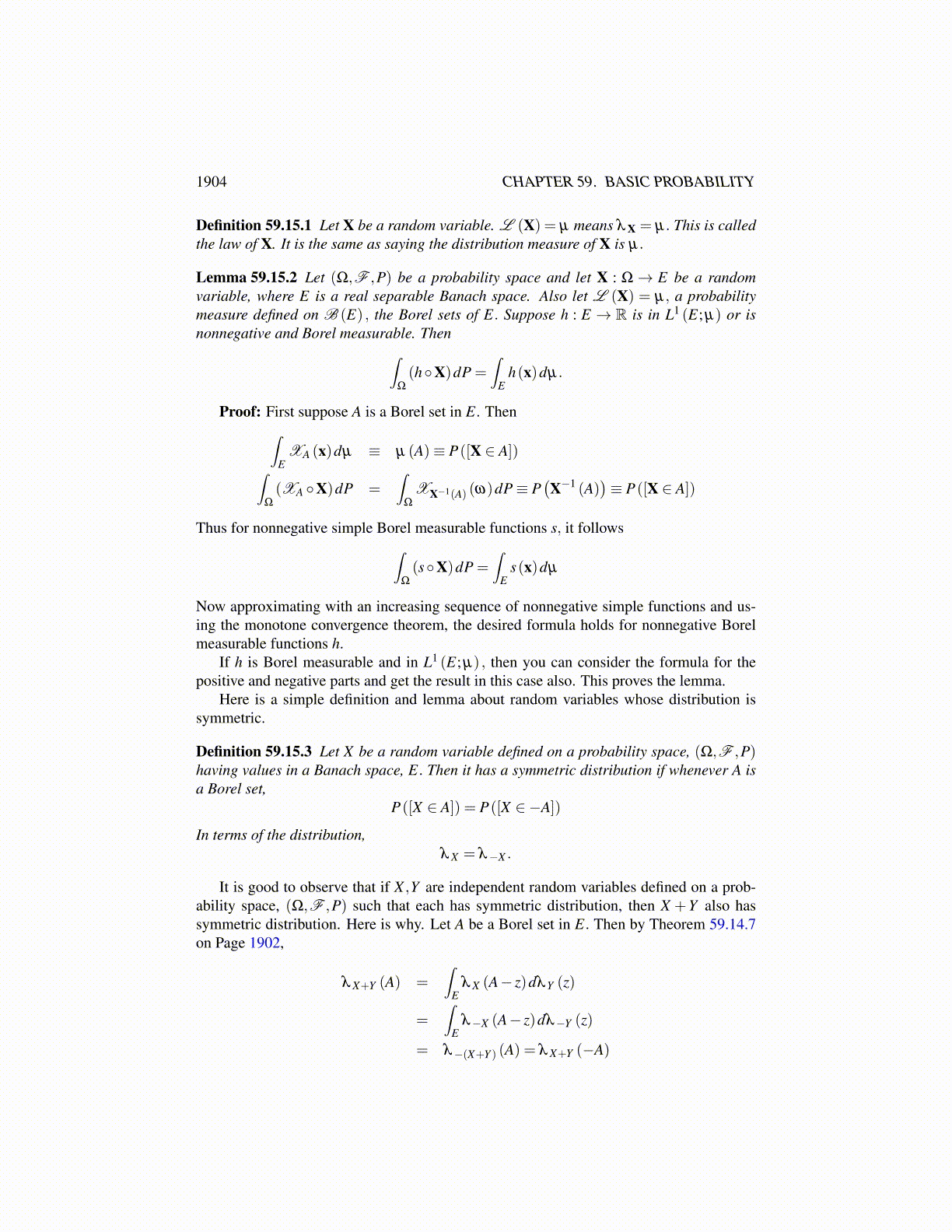
1904 CHAPTER 59. BASIC PROBABILITY
A ∈ G . For (x,y) ∈ E×E, either x+ y ∈ A or x+ y /∈ A. Hence E×E = SA ∪ SAC whichshows that if A ∈ G then so is AC. Finally if {Ai} is a sequence of disjoint sets of G
S∪∞i=1Ai = ∪
∞i=1SAi
and this shows that G is also closed with respect to countable unions of disjoint sets. There-fore, by the lemma on π systems, Lemma 12.12.3 on Page 329 it follows G = σ (K ) =B (E) . This proves the lemma.
Theorem 59.14.7 Let µ, ν , and λ be finite measures on B (E) for E a separable Banachspace. Then
µ ∗ν = ν ∗µ (59.14.23)
(µ ∗ν)∗λ = µ ∗ (ν ∗λ ) (59.14.24)
If µ is the distribution for an E valued random variable, X and if ν is the distribution for anE valued random variable, Y, and X and Y are independent, then µ ∗ν is the distributionfor the random variable, X +Y . Also the characteristic function of a convolution equalsthe product of the characteristic functions.
Proof: First consider 59.14.23. Letting A ∈B (E) , the following computation holdsfrom Fubini’s theorem and Lemma 59.14.6
µ ∗ν (A) ≡∫
Eν (A− x)dµ (x) =
∫E
∫E
XSA (x,y)dν (y)dµ (x)
=∫
E
∫E
XSA (x,y)dµ (x)dν (y) = ν ∗µ (A) .
Next consider 59.14.24. Using 59.14.23 whenever convenient,
(µ ∗ν)∗λ (A) ≡∫
E(µ ∗ν)(A− x)dλ (x)
=∫
E
∫E
ν (A− x− y)dµ (y)dλ (x)
while
µ ∗ (ν ∗λ )(A) ≡∫
E(ν ∗λ )(A− y)dµ (y)
=∫
E
∫E
ν (A− y− x)dλ (x)dµ (y)
=∫
E
∫E
ν (A− y− x)dµ (y)dλ (x) .
The necessary product measurability comes from Lemma 59.14.4.Recall
(µ ∗ν)(A)≡∫
Eν (A− x)dµ (x) .